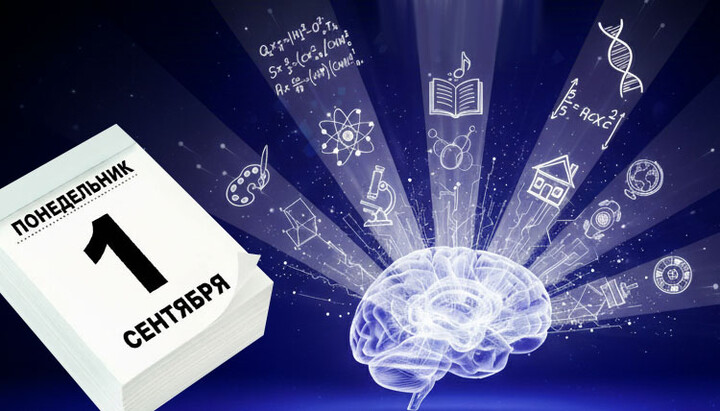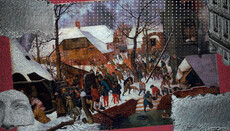Knowledge Day: What do we really know about the world and reality?

Why the scientific picture of the world is an illusion created by the brain, and what role faith plays in cognition. Reflections on the limits of the human mind.
September 1 is traditionally celebrated in our country as Knowledge Day. It marks the beginning of the school year in schools, universities, and other educational institutions. Intellectual knowledge has become the sacred book of modern civilization. It is knowledge that allows us to live the way we want – comfortably, well-fed, and safely. In one sense this is true. Yet on the other hand, it is precisely the pursuit of comfort and abundance that has created the problem of hunger and poverty, since earthly resources are insufficient to satisfy the ever-expanding hedonistic demands of humanity. And the achievements of the military industry have reached such “successes” that they can erase all life from the face of the earth – more than once.
The problem of subjective experience
But I would like to draw your attention not to the ethical issues of how accumulated knowledge is used, but to the fact that the knowledge we acquire through countless experiments is not objective by nature.
There is one problem that scientists cannot solve and never will: the problem of the subjectivity of scientific experience.
Once there was such a case. A priest was dying. Befotre his death, he looked around in astonishment and kept repeating: “It’s all wrong.” “What exactly is wrong?” he was asked. He answered: “It's all wrong.” Perhaps one should not pay too much attention to these words, because we all perceive the world differently. And it seems especially different when a person’s psyche begins to function in ways unusual for ordinary people. But that is precisely the point. We have no other way of thinking than by means of the brain.
Imagine how we would see this world if we had, for example, molecular vision – if our eyes could see the world through a microscope. And what if our thought processes were constructed completely differently? Our biological structure is very different from that of an earthworm. Yet the difference between man and God is infinitely greater than between us and the worm. Imagine that this worm tried to build a model of the universe based on its own limited abilities. Human beings have more possibilities than the worm in comprehending the world. But can we be certain that they are sufficient for our picture of the world to be considered objective?
The world our brain creates
I once had to read the scientific works of Professor Karl Pribram. This famous neurosurgeon experimentally demonstrated that everything we “see,” “hear,” “feel,” “touch,” and “smell” is not what it really is. The impulses we receive from our sensory organs are modeled by the brain in such a way that they undergo radical modification even before they reach our consciousness. We do not see or hear with our sensory organs, but with the brain, and the entire picture of the external world is nothing other than music performed by our gray matter on notes that it itself has composed.
The world in which a person lives is an associative complex, made up of countless components modeled within the brain.
What scientists call “objective reality” has nothing to do with reality itself.
Quantum mechanics has gone even further. It suggests that everything we call the universe, the cosmos, is a kind of indivisible whole which our brain unfolds and models within itself and for itself, presenting it as the “world around us,” through the complex workings of nerve fibers. This conclusion was confirmed by the works of David Bohm, Alain Aspect, and other prominent scientists. Moreover, we must understand that our brain reads information selectively, only that which is directly relevant to our survival system. And this happens independently of our will.
Most of the information about what lies “beyond” the brain refuses to convey to us at all.
In simpler terms, everything we call the “world around us” exists in only one place – in our brain.
“Objective reality” is what we carry inside our head, in the gray matter of the brain. But this “place” is extraordinarily complex.
The greatest mystery: brain and consciousness
Twenty-eight billion neurons in the cerebral cortex alone. That is three million kilometers of neural network. In the human embryo, neurons are formed at a rate of 500,000 per minute – thirty million per hour. Tremendous speed and enormous energy consumption. In an infant, the brain consumes fifty percent of all the body’s energy, while in an adult it is about twenty-five percent.
If all the work the brain does had to be transferred to an external source, it would require the power of hundreds of nuclear power plants. Yet the brain consumes energy equivalent to that needed to power a ten-watt light bulb. And no one can explain how this is possible. A single neuron in our brain has about forty thousand connections with other neurons.
If we multiply this by the total number of neurons, we get an astonishing figure – the number of neural connections in the brain exceeds the number of stars in the entire universe.
And yet, for all this grandeur, scientists have not been able to discover what we call “consciousness,” or more precisely, the human personality.
A Dutch research group led by Pim van Lommel published in The Lancet the results of a decade-long study of brain function. English researchers at a clinic in Southampton came to the same conclusion. Their finding was startling: “The brain is not thinking matter.”
Moreover, strange terms began appearing in scientific literature, such as NDE (near-death experience). Scientists have determined that NDE visions occur at the moment the brain ceases functioning. They cannot be explained by physiological causes such as oxygen deprivation of brain cells or the action of drugs. How, for instance, can one explain that some people recall prenatal or perinatal experiences? This is, in principle, impossible, since “memory” begins only after the process of wrapping nerve fibers in myelin is complete – the process that allows the transmission of nerve impulses – and this occurs at a much later stage of development.
Faith as a way of knowing reality
What does all this have to do with faith? What does the religious model of the world give us?
Faith fills in what we cannot see with our brain.
It is as if we were looking at a painter’s canvas and saw only a two-dimensional surface smeared with oil pigment. But in it we perceive houses, trees, people living in a three-dimensional world. Our brain adds what the painter cannot depict on a two-dimensional canvas. In the same way, faith “adds” to us the reality that our sensory organs are unable to register.
When faith begins to act and take root in a person, empirical knowledge may become altogether unnecessary. Faith sees, hears, and understands the world more deeply and accurately than the five senses. Human existence then ascends to a new level, unattainable to scientific cognition. People of holy life can perceive what happens thousands of kilometers away. They can hear the thoughts of others, feel the state of their souls. But all this is God’s gift to one who lives by faith and entrusts himself not to his own reason, but to God and His Word.











